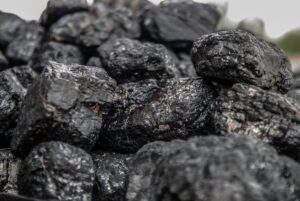Rural Centralia, Washington, and surrounding Lewis County have long struggled economically. From 1998 to 2014 the county added no jobs. The town’s largest employer, a coal mine, which employed 600 workers, closed in 2006. And operations at its other major employer, a coal-fired power plant have been reduced by half as the plant works toward a planned retirement in 2025.
As these events unfolded, they seemed like an economic death sentence to many in Centralia. But fate intervened. The mine’s and power plant’s owner, TransAlta Corporation, struck a deal with the state of Washington and environmental groups to fund an economic transition plan to help Centralia and other areas of the state adapt to the emerging clean energy economy.
The company is providing $55 million in funding over ten years for a Weatherization Fund, an Economic and Community Development Fund, and an Energy Technology Fund. Grants from the funds started being disbursed in 2016, and by 2019 something miraculous had happened.
- Centralia’s GDP grew at twice the rate of the nation’s.
- Jobs also grew at nearly twice the national rate.
- Wage growth exceeded the national average.
- Centralia’s and Lewis County’s populations grew faster than the national average as well.
In all, Centralia and Lewis County added over 2,800 new jobs to an economy that had only 24,000 to begin with. Not bad for a place whose unemployment rate, prior to the grants program, had for a quarter-century hovered at about two-and-a-half percentage points higher than the national average.
But how did it happen? An examination of Centralia’s job growth shows that the growth in jobs was almost entirely organic. It came largely from within the county’s existing economy and particularly those sectors that were targets of the grant program. It’s also the case that the targeted sectors have disproportionately large employment multiplier effects.
- The energy efficiency and education sectors in which grant funding is concentrated are 2 to 3 times more labor-intensive than mining and utilities.
- Work in these sectors tends to be performed by local suppliers and contractors, so most of the upstream and downstream economic activity occurs locally as well.
- The grants stimulate additional private investment, which compounds their impact by roughly 3-4 times.
- The grants program is efficient because it leverages existing businesses and programs.
- The grants are annuity-producing because they lower monthly utility bills, which provides an ongoing boost to disposable income for residents.
- Growth in jobs and commerce for local merchants begins right away because energy efficiency and education are always “shovel-ready”.
- Energy efficiency upgrades result in safer, more comfortable living and workspaces that reduce absenteeism and healthcare costs and enhance residents’ quality of life and the local business environment.
These characteristics—high jobs-intensity, engagement of local businesses and resources, the leveraging of existing programs and institutions, the production of annuity benefits and increased disposable income, and enhanced quality of life—are replicable in other similarly challenged small and rural communities.
In fact, Centralia’s plight was quite similar to the situation currently facing communities throughout Appalachia and other distressed regions. That is why the Ohio River Valley Institute is proposing Centralia as a model for economic revitalization of distressed communities –perhaps the first to make the concept of “just transition” real and actionable for state and local policymakers.
To learn more, please visit ohiorivervalleyinstitute.org.
Sean O’Leary is a senior researcher at the Ohio River Valley Institute and the lead author of “The Centralia Model for Economic Transition in Distressed Communities.”